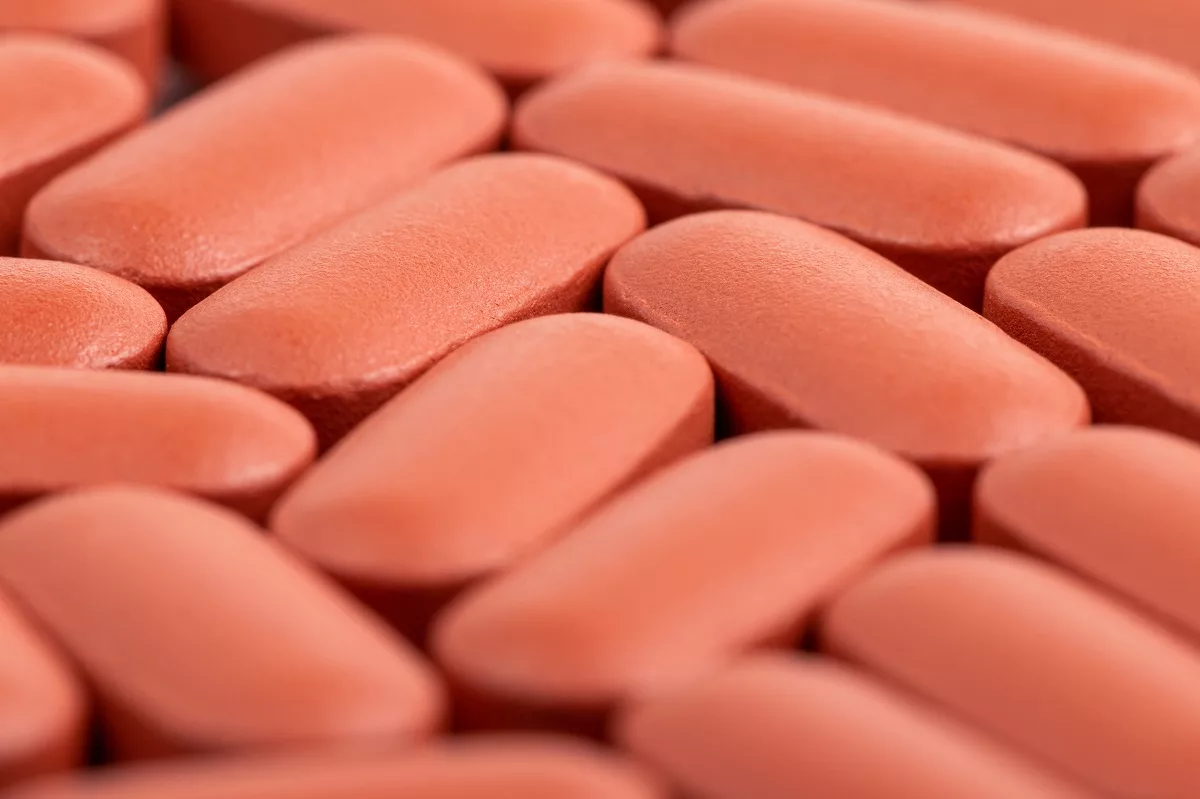A serious health condition in which one or more blood clots develop in the blood vessels or heart is called thrombosis. These blood clots can reduce or even block blood flow to multiple structures and organs in the body. Moreover, a blood clot may break and travel to other parts of the body and get stuck. Therefore, it may lead to life-threatening conditions, including a heart attack (myocardial infarction), stroke, and others.
While the symptoms are often different among people with thrombosis because it depends on where a blood clot forms, they may include chest pain, breathing problems, skin changes, and others.
In some cases, people are at increased risk of thrombosis due to certain factors or other health problems. In general, this is a serious health condition because it may turn quickly into a medical emergency. Early diagnosis and proper treatment help improve the chances of a good outcome.
Types of Thrombosis
There are two primary types of thrombosis. For example:
- Arterial thrombosis – In such cases, the blood clot forms in an artery. Arteries and blood vessels that carry blood from the heart throughout the body. Moreover, this type of thrombosis is one of the most common causes of strokes and myocardial infarctions.
- Venous thrombosis – It occurs when a blood clot forms in the veins, blood vessels that carry oxygen-poor blood back to the heart. This type of condition is the most common cause of a pulmonary embolism (this condition happens due to a blood clot in the lungs).
In any case, this condition is dangerous because it may cause blockages anywhere in the body. For example:
- Blockages where it forms – Usually, a clot stays in place until it grows large enough to block blood flow.
- Blockages in other parts of the body – A large blood clot may break and spread to other parts of the body. The broken part is called an embolus, and it may get stuck in small blood vessels, creating an embolism (blockage). When it occurs, people often develop strokes and pulmonary embolisms.
Generally, this is a common health condition that causes 1 in 4 deaths worldwide because it often leads to life-threatening conditions, including stroke, myocardial infarction, pulmonary embolism, and others.
Symptoms
The symptoms are often different among people with thrombosis because they depend on several factors. For example, the exact location and size of the blood clot, existing health problems, age, and other factors. However, blockages tend to occur more frequently in small blood vessels, mostly located in the lungs, arms, and legs. Check below some symptoms for each location:
Lungs
- Sudden and sharp pain in the chest and nearby areas (including the jaw, neck, shoulder, back, or arm)
- Pain when you breathe
- Sudden shortness of breath
Brain or Neck
- Weakness
- Difficulty controlling the muscles in one part of the body
- Speaking problems
- Confusion
- Agitation
- Lack of muscle control on one side of the face
Heart
- Difficulty breathing
- Angina (chest pain)
- Dizziness
- Passing out
- Females may also experience other symptoms
Abdomen
- Severe abdominal (belly) or stomach pain, especially after a meal
- Bloating
- Nausea
- Vomiting
- Bloody diarrhea
- Fever
Artery in the Arm or Leg
- Skin color changes
- Inability to move the affected part of the body
- Numbness or tingling
- Sores or blisters on the skin
- Necrosis (tissue death)
Vein in the Arm or Leg
- The skin may look redder or darker than other areas
- Fluid buildup
- Pain
Immediately contact your healthcare professional if any of the symptoms listed above occur.
Causes
This health condition often occurs when something causes damage to the inner lining of a blood vessel (endothelium). In such cases, the blood cells begin to stick together when they normally should not.
In normal circumstances, there are a lot of blood cells that coexist and come together when needed. For instance, if you have a wound, proteins and platelets join together to make a clot necessary to stop losing too much blood. This process is called hemostasis. After the wound is healed, this clot dissolves. However, there are some diseases, medicines, and other factors that make blood cells stick together when it is not needed or fail to dissolve. Therefore, blood clots form in the blood vessels. If a blood clot becomes too large, it may break and travel throughout the body.
Risk Factors
There are some factors that may interfere with the ability of blood to flow freely or clot properly. Hence, it significantly increases the risk of developing thrombosis. Check below some examples:
- Atherosclerosis
- Atrial fibrillation
- Older adults (over 60 years old)
- Blood clotting disorders
- Cancer
- Chemotherapy
- Diabetes
- A family history of blood clots
- Surgery or other procedures (including central line placement)
- Hypertension (high blood pressure)
- Heart failure or heart valve disease
- High cholesterol
- Inflammatory or autoimmune disorders
- Obesity (excessive body weight)
- Paralysis
- Pregnancy
- Smoking
- Hormone replacement therapies (often used to relieve menopause symptoms)
- Birth control pills
- Sitting for long periods
- Coronary artery disease
- Antiphospholipid syndrome
This document does not contain a full list of factors that may increase the risk of developing thrombosis. Talk with your healthcare professional for more details.
What Are The Potential Complications of Thrombosis?
If you ignore the symptoms or do not get treatment for thrombosis, it may lead to certain complications. These include:
- Pulmonary embolism
- Stroke
- Myocardial infarction
- Post-thrombotic syndrome
- Chronic venous insufficiency
- Phlebitis
- Bleeding
- Transient ischemic attack (TIA)
- Mesenteric ischemia
Consult with your healthcare professional about ways to reduce the risk or prevent complications.
How to Prevent Thrombosis?
There are some tips that may help reduce the risk of thrombosis, especially if you are at higher risk of developing it. To know more about your risk, it is recommended to perform annual physical checkups. Check below some examples:
- Manage high blood pressure – This condition may cause damage to the blood vessels, especially if it is not managed for long periods.
- Blood-thinning medicines – This group of medications is used to prevent the blood from clotting. Doctors may recommend blood-thinners (also called anticoagulants) to prevent or treat thrombosis.
- Cholesterol-lowering medicines – These medications help reduce the buildup of plaque in the arteries. These plaques significantly increase the risk of developing thrombosis.
- Dietary changes and exercise – It is recommended to aim for at least 30 minutes of physical exercise per day, at least 5 days a week. Furthermore, doctors may also advise dietary changes (such as a Mediterranean diet).
- Quit smoking – All forms of tobacco increase the risk of thrombosis. If you face problems with smoking cessation, discuss it with your healthcare professional.
Diagnosis
Usually, the diagnosis of this condition begins with a physical examination to check for abnormalities linked to the disease. Thereafter, physicians may ask some questions about the symptoms and medical history. However, to confirm the condition, doctors may perform the following tests. Check below some examples:
Imaging Tests
The following tests are often used to get images of structures and organs inside the body. For example:
- CT (computerized tomography) scans
- MRI (magnetic resonance imaging) scans
- Ultrasound
- X-rays of the blood vessels (including angiogram and venogram)
Blood Tests
The following tests often help doctors identify blood clots. For example:
- Blood components – It involves several blood tests to check for substances that affect clotting.
- Clot-formation markers – This test helps determine if blood clots in time. It may also confirm or exclude an active clot.
- Heart damage markers – In such cases, blood tests are done to check for a protein called Troponin. This protein is found in the muscle cells of the heart.
Treatment
Usually, thrombosis is treated with minimally invasive procedures, medicines, and surgeries. It often depends on the cause and severity of the condition, overall health, age, preferences, and other factors. Check below some treatments:
- Anticoagulants (also known as blood-thinners) – This group of medications is used to keep the blood from clotting.
- Thrombolytic therapy – This procedure involves specific medications used to dissolve blood clots. They are especially helpful when a blood clot forms in critical areas.
- Thrombectomy – Physicians usually recommend this surgery to remove a clot. In most cases, surgeons use open or minimally invasive techniques.
Frequently Asked Questions
How soon after treatment will I feel better?
Commonly, people feel better within minutes or hours, depending on where the blood clot forms. In severe cases, you may notice improvements after a few days. Discuss with your doctor to know more about what to expect in such situations.
When should I go to the ER?
Go to the nearest emergency room (ER) or call 911 if you develop severe symptoms (such as sudden chest pain).
What is the main cause of thrombosis?
In most cases, this condition occurs due to fatty deposits (atherosclerosis) that make your blood vessels narrower or even blocked. The factors that increase the risk of developing atherosclerosis include hypertension, diabetes, high cholesterol, obesity, and a family history of atherosclerosis. Ask your healthcare provider if you have any other questions.




